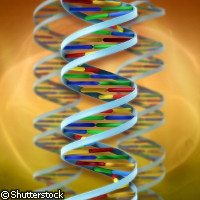Researchers identify new DNA cell repair mechanism
An international team of researchers has discovered a new way that DNA repairs itself; it is a process that not only protects the genome but also prevents cancer development. Published in the journal Nature, the findings show how elements from known mechanisms combine with an unrelated second method whose contribution to DNA repair was previously unknown. The findings are an outcome of the EU-funded CHEMORES ('Molecular mechanisms underlying chemotherapy resistance, therapeutic escape, efficacy and toxicity') project, which targets the improvement of cancer treatment by obtaining increased knowledge on mechanisms of chemotherapy resistance. Backed with EUR 8.71 million in funding, CHEMORES falls under the 'Life sciences, genomics and biotechnology for health' Thematic area of the Sixth Framework Programme (FP6). According to the authors, alkyltransferase-like proteins (ATLs) control the novel DNA-repair mechanism. The structure and function of ATLs had remained a mystery and researchers had previously identified them only in yeast and bacteria. But ATLs also exist in the sea anemone, a multicellular organism, the researchers stated. Therefore, this protein or its cousins, in terms of repair activity, may exist in other species like humans, they added. 'We found a connection between the known DNA repair processes that people did not know was there,' explained Professor John Tainer of the Skaggs Institute for Chemical Biology at the Scripps Research Institute in the US, which led this study. 'This changes the game, and gives us something important to look for in cancers that are resistant to chemotherapy.' External sources including ultraviolet (UV) light and radiation damage a cell's DNA, as do continuous activities inside the cell. The researchers said the majority of the damage affects the DNA bases of adenine, cytosine, guanine and thymine that pair up together inside the DNA double helix (adenine with thymine, and cytosine with guanine). According to the researchers, various methods can be used to chemically modify these bases. By alkylation is one way; an alkyl group (or 'adduct') is transferred onto a guanine base. Once this occurs, a hydrogen bond holding cytosine and guanine is removed, effectively boosting the chance that thymine will be inserted across from guanine during DNA replication. A mutated gene emerges when DNA is replicated with this 'transition' error, which in turn alters the information and could lead to harmful results including cancer or cell death. A case in point is cigarette smoke that sticks to guanine. This is when the DNA repair mechanism kick-starts into action. The DNA repair process that removes toxic 'lesions' is called 'base repair' which uses the 06-alkylguanine DNA-alkyltransferase (AGT) protein to remove the alkyl group before the DNA replicates, the study showed. What happens, according to the researchers, is that the protein inserts a 'chemical finger' inside the DNA to 'flip' the damaged guanine out from the DNA helix structure so that its adduct is exposed and can be transferred from the guanine to a part of its protein structure. The guanine gets repaired and rejoins cytosine with three hydrogen bonds connecting them. The researchers stated that while AGT is believed to act alone, nucleotide excision repair (NER) uses a number of proteins in its pathway. This repair occurs when bulky adducts that are stuck to bases alter the sleek shape of the DNA helix. A group of proteins then enter the picture and remove the patch of bases including the adduct; DNA polymerase (an enzyme that catalyses the formation of new DNA from an existing DNA strand) kicks in, fills the patch and adds the correct base. 'Base flipping by [an] ATL is like a switch that activates the NER pathway, which then removes the alkyl adduct from the guanine,' said lead author Julie Tubbs of Scripps Research. 'So we believe that [an] ATL is conceptually acting like a bridge, connecting the two DNA repair pathways ¿ base and NER ¿ together,' she added. 'This is a surprisingly general mechanism to channel specific base damage into the general NER pathway.' Also participating in the study were researchers from the University of Manchester and the University of Newcastle-upon-Tyne in the UK.
Countries
United Kingdom, United States



